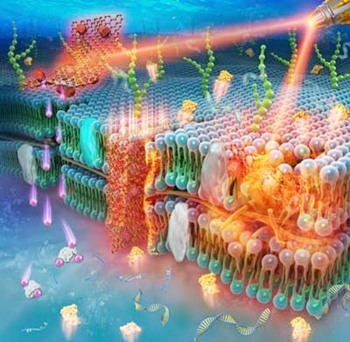|
NOVIDADES
Pathogenic infectious diseases have emerged as one of the greatest threats to global public health. In the past decades, antibiotics are the most widely used treatment to address pathogenic infectious diseases. However, following a long period of misusing antibiotics, the outburst of drug-resistant bacteria becomes a new and more challenging threat to current anti-infective therapies. Therefore, developing novel nanomaterials to combat pathogens by different kinds of actions is urgently required. Recently, researchers have successfully established diverse kinds of chemo-, photothermal, or photodynamic antibacterial materials and therapies. However, these single-model bactericidal therapies are always difficult to efficiently or completely eradicate the bacterial infection, especially at low concentrations of the therapeutic agents. "The combination of multiple therapeutic modalities with synergetic effects is a promising approach to enhance antibacterial efficiency and possibly decrease the needed concentration of bactericidal reagents," says Prof. Dr. Chong Cheng, an AvH research fellow and a biomedical specialist at Department of Chemistry at Freie Universität Berlin (Germany).  Metal-organic-framework-derived 2D carbon nanosheets can achieve efficient bacterial eradication and anti-infective therapy via triple bactericidal modalities, i.e. localized massive Zn2+ ions penetration, physical cutting, and hyperthermia killing. Image: Prof. Dr. Chong Cheng, Department of Chemistry at Freie Universität Berlin
Xin Fan and Fan Yang at Sichuan University, describe, this proposed MOF-derived 2D carbon nanosheets (2D-CNs) can form aggregations spontaneously under NIR irradiation and meanwhile exhibit localized triple bactericidal modalities, i.e. localized massive Zn2+ ions penetration, physical cutting, and hyperthermia killing, which synergistically enhance the disruption of bacterial membranes and intracellular substances. Most importantly, the 2D-CNs not only present robust and localized multiple bacterial eradication capabilities with nearly 100% bactericidal efficiency at very low dosage but also possess rapid and safe skin wound disinfection via a short-time photothermal treatment without damaging normal skin tissues or causing accumulative toxicities. “Thus, we believe this novel antibacterial 2D-CNs present great promise for utilization as alternatives to antibiotics for the broad-spectrum killing of pathogenic bacteria over many application areas, for instance, clinical skin infection treatments, sterilization of biomedical devices, and also water disinfection,” says Prof. Dr. Chong Cheng. By Prof. Dr. Chong Cheng, Department of Chemistry, Freie Universität Berlin. Accessed: Jan 16, 2020.
|
|||||||||||||||||||||||||